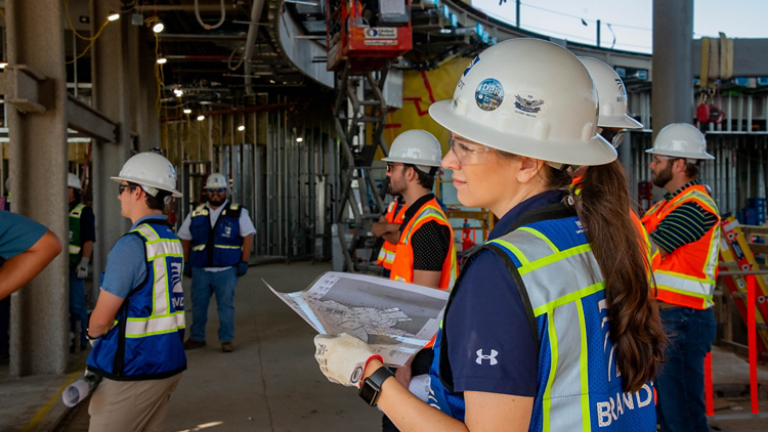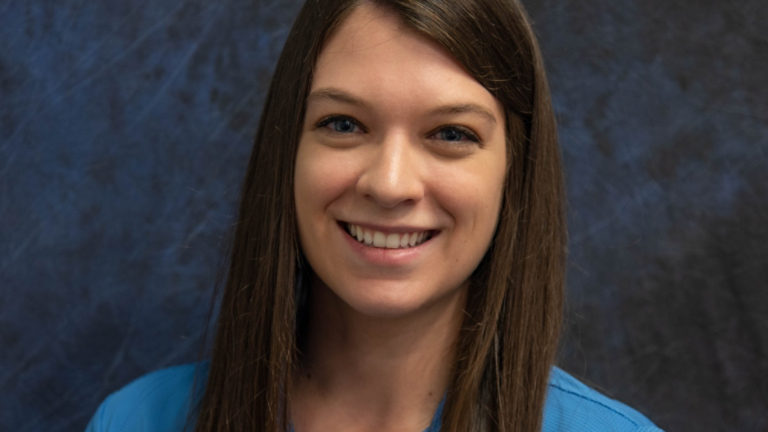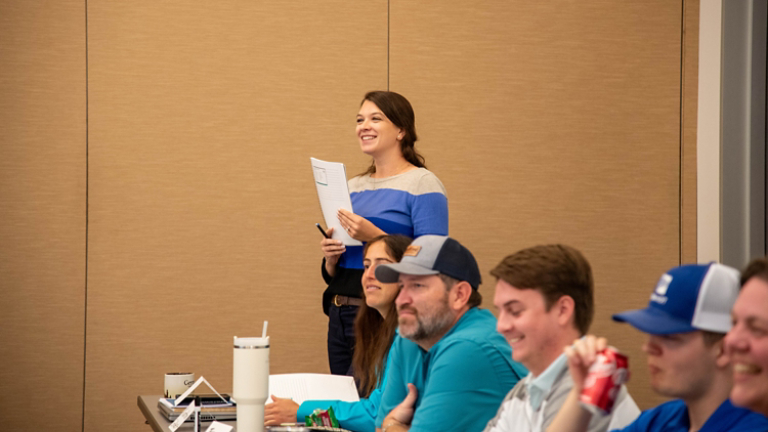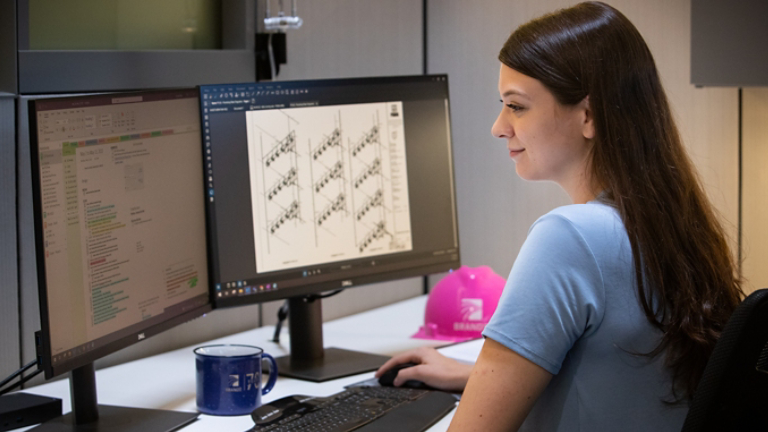Blog
Published: April 09, 2025
Engineering Destiny: Chrystelle Le Roux’s Journey with Brandt
Construction project manager leverages curiosity, family history, and work ethic to get things done.

Quick Facts
- Topics
- Employee Spotlight


The Path to Brandt
Le Roux grew up in Houston—oil and gas country—and graduated from Baylor University with a degree in mechanical engineering. She soon found work at a gas company in Frankfurt, Germany but quickly realized she wanted to move back to Texas.
She started looking at oil and gas jobs in Texas but wasn’t sure it would be the best fit. It’s a boom-and-bust industry, and she was hoping to land something more stable.
Around the same time, she was talking to friends who worked for the Brandt Companies, a Dallas-based, design-build and construction firm, who were encouraging her to check out the company. Brandt is the largest mechanical, electrical and plumbing contractor in Texas and it seemed like a nice opportunity.
On top of that, her father had worked in construction, and her brother had recently helped build the first 3D printed home in the U.S. Thinking engineering would be a good path for her, she interviewed with Brandt and was soon offered a position.

The Engineering Learning Curve
Like many young engineers, Le Roux graduated from college with a fair handle on her profession. She’d had good grades, understood the science, and could rely on her family for insights. She came in with some confidence, but her first few weeks at Brandt made her realize there was still much to learn.
“I started out as an assistant construction project manager, and I remember my first day on a job site,” said Le Roux. “I remember going on my first job walk with the superintendents. I was mesmerized on how everything came together and all the intricacies on a construction site.”
Gradually, she grew more comfortable in her role and rose through the ranks. Now, eight and half years into her career, she loves the work and eagerly learns something new every day. Le Roux is now a project manager, taking on large and small jobs: a hospital, an office building, a manufacturing plant, a data center, even a jail.
Le Roux appreciates the intensive teamwork that goes into every project. At the start of every project, each group has an initial meeting to lay out expectations, discuss learnings from previous jobs and share ideas for the upcoming project. This process, along with the sheer diversity of projects, helps make the work fun, with small renovations informing larger jobs and vice versa.
“We used to think of large jobs as office buildings, Hospitals like Parkland or semi-conductor plants,” says Le Roux. “Now we have a whole new tier—mega jobs—like the 1 million plus square foot semiconductor plant we’re working on. It’s fun, and every job is different. There’s a broad range of projects and personalities and learnings from people from all over the country.”
Balancing Sustainability and Cost
Many of Brandt’s clients want to embrace sustainable practices, and part of her job is helping them understand what that might entail. Net zero projects are always appealing—both for the economics and the environment—but the upfront costs can be steep. Le Roux and colleagues help companies find the sweet spot where they can improve energy efficiency in feasible ways.
“We did a study for a client who wanted to be net zero,” said Le Roux. “Unfortunately, they would have had to add around a hundred acres of solar panels to make that happen. No one has that much real estate, particularly in downtown Dallas. I wish things weren’t as expensive so we could be more sustainable and strive toward a greener planet.”
Over the years, Trane has been an essential partner in these efforts. Le Roux has worked with Trane on several projects, including the Rockwall County Detention Center, which presented unique challenges.
“The interaction between the engineering team on the Brandt side and the Trane team on all the smoke testing was impressive,” said Le Roux. “We had to really prepare, and we ended up passing the smoke test in just a day.”

Going to the Next Level
Le Roux feels fortunate to work at Brandt and have access to great mentors. “I’m eight years into this, and I feel like I’ve learned a lot and have gained a ton of experience,” she said. “Then, I’ll go into a meeting and realize that I’m still early in my career and have so much more to learn. But the great part is, I can always roll my chair over to someone with different experiences, and they’re more than happy to share their knowledge.”
The education is ongoing, both in and out of the office. She recently completed a women’s executive leadership program, a yearlong skills training sponsored by a large construction industry trade association.
“It was a lot of training in capabilities as well as some hands-on practice, how to act in certain situations, and improving our self-awareness,” said Le Roux. “It was an awesome program, and I got to network with other females in the industry.”
Le Roux also enjoys Brandt’s culture. The company regularly supports the Special Olympics and one year the interns outfitted a medical trailer for the event. There is also a Brandt women’s group to help her and others with their journey. Quite a few women engineers have joined Brandt in the past few years, which has built up a lot of camaraderie.
“At Brandt, we now have a lot of women in our engineering group which is amazing to see in a male dominant industry,” said Le Roux. “I think that goes back to what’s happening in engineering schools, which have become much more encouraging. Engineering has become a real career path for women.”
